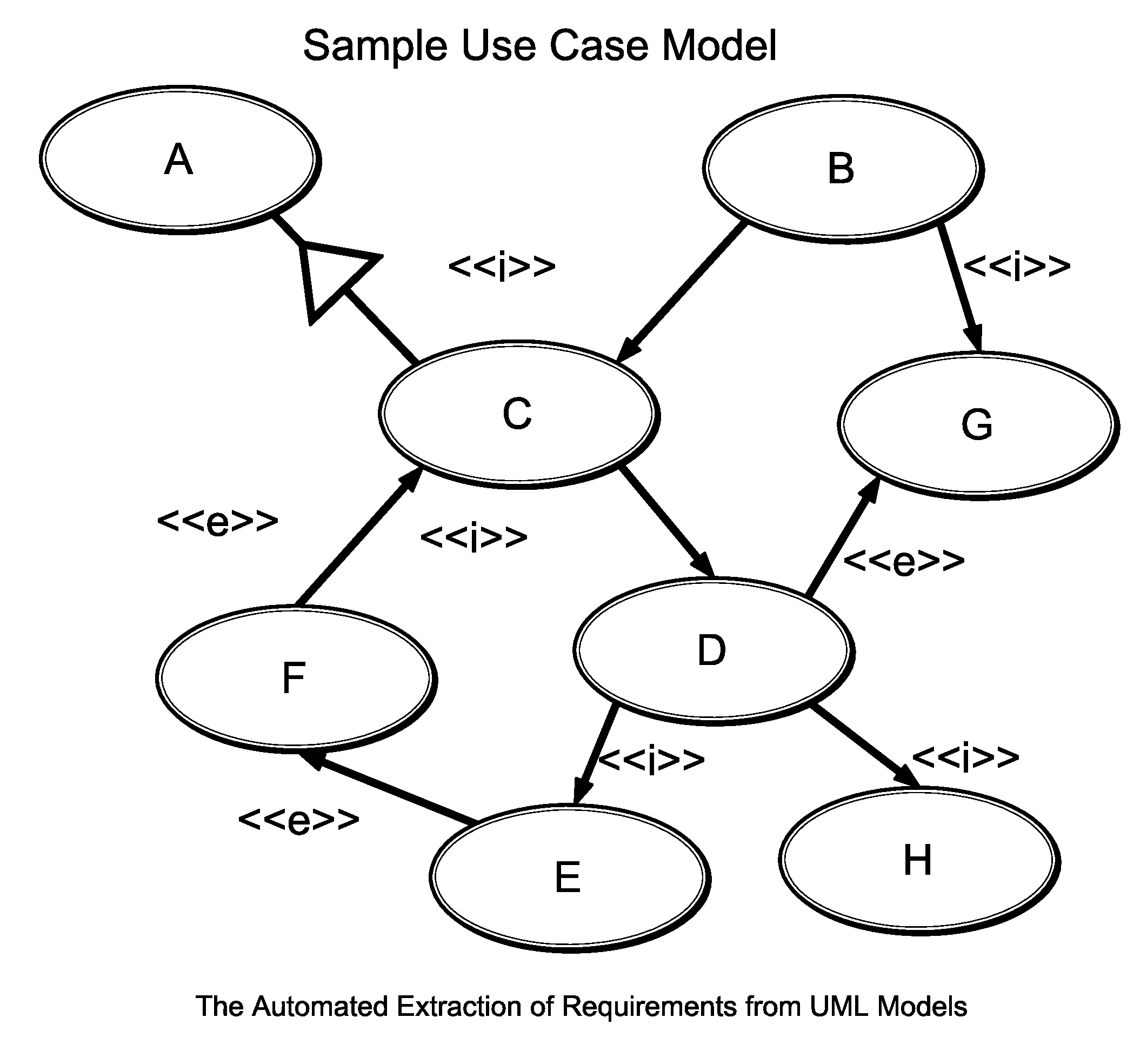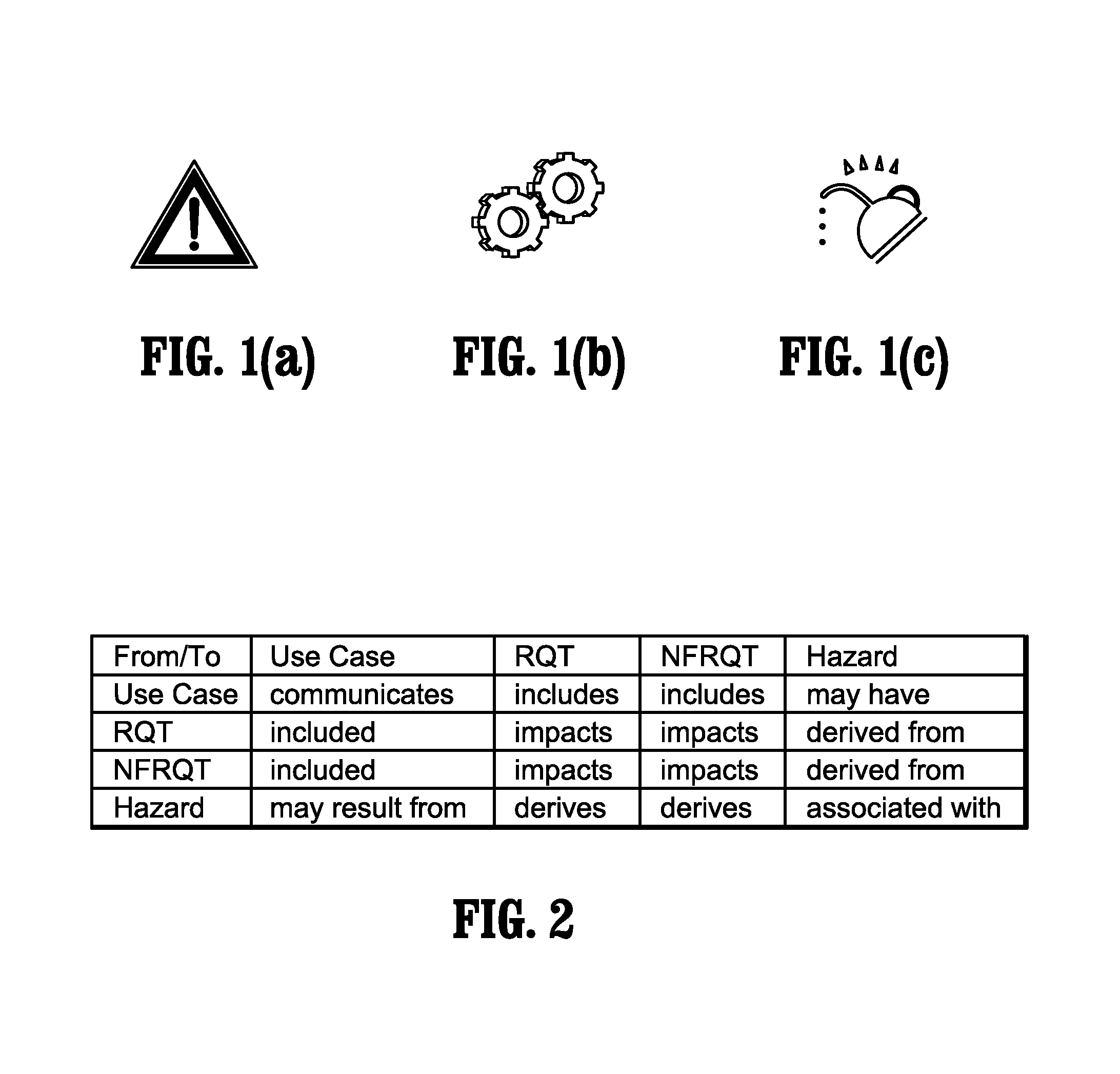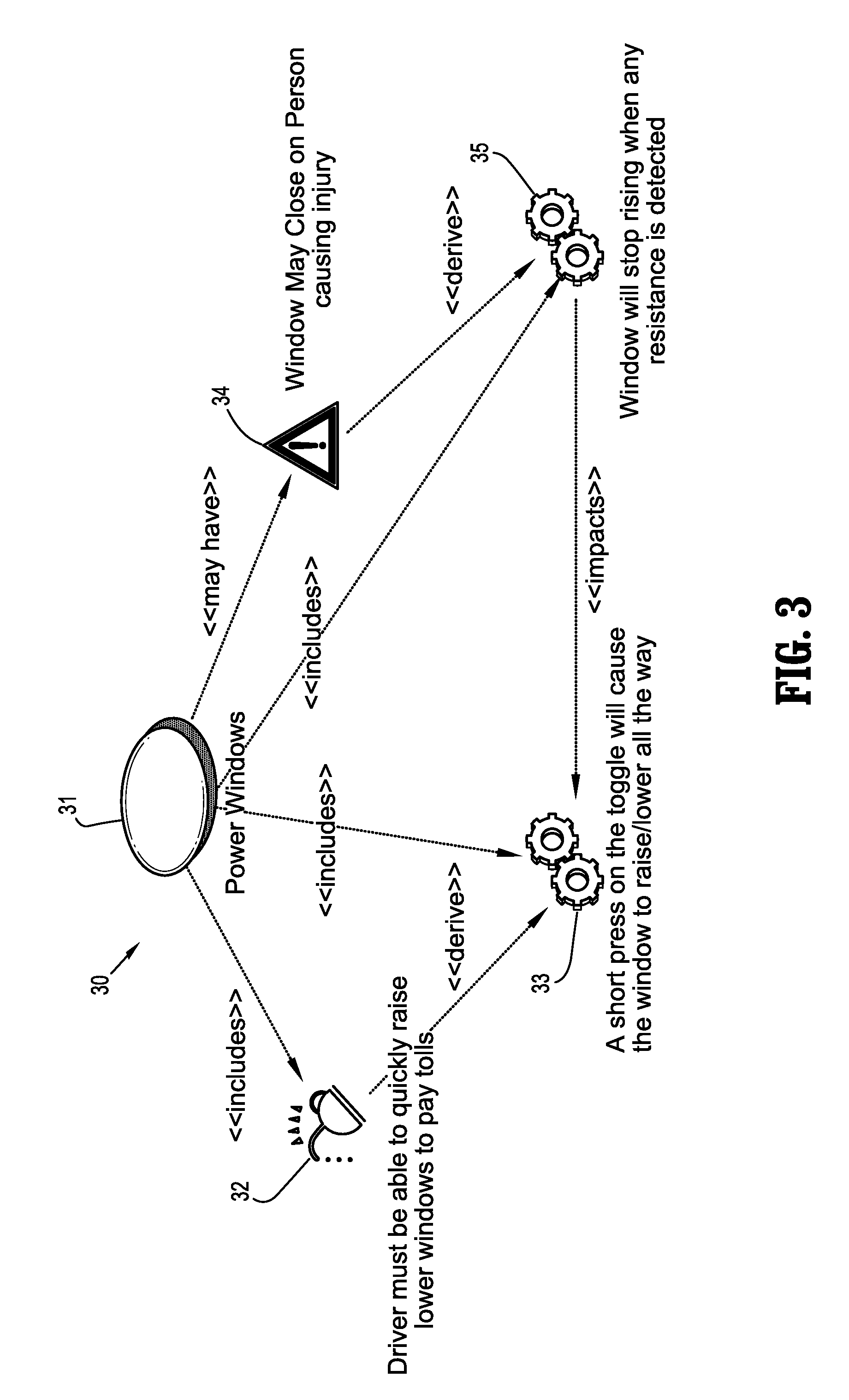System and method for specifying functional and non-functional requirements for a project
a technology of functional requirements and project requirements, applied in the field of modeling, can solve the problems of not being communicated to the architectural team, not being able to achieve the effect of reducing the number of requirements, tracing, and reading difficulties, and achieving the effect of simplifying the reuse of requirements
- Summary
- Abstract
- Description
- Claims
- Application Information
AI Technical Summary
Benefits of technology
Problems solved by technology
Method used
Image
Examples
Embodiment Construction
[0035]Exemplary embodiments of the invention as described herein generally include systems and methods for extending UML to support the integration of hazard and requirements analysis and the binding of resultant exposed requirements to their respective use cases, with enabling tool support.
[0036]The Unified Modeling Language (UML) is a standard language for specifying, visualizing, constructing and documenting the artifacts of software systems, as well as for business modeling and other non-software systems. The UML represents a collection of best engineering practices that have proven successful in the modeling of large and complex systems. UML forms an integral part of object oriented software development and three software development process. UML uses mostly graphical notations to express the design of software systems. Using UML helps project teams communicate, explore potential designs, and validate the architectural design of a software system.
[0037]There are currently 13 di...
PUM
 Login to View More
Login to View More Abstract
Description
Claims
Application Information
 Login to View More
Login to View More - R&D
- Intellectual Property
- Life Sciences
- Materials
- Tech Scout
- Unparalleled Data Quality
- Higher Quality Content
- 60% Fewer Hallucinations
Browse by: Latest US Patents, China's latest patents, Technical Efficacy Thesaurus, Application Domain, Technology Topic, Popular Technical Reports.
© 2025 PatSnap. All rights reserved.Legal|Privacy policy|Modern Slavery Act Transparency Statement|Sitemap|About US| Contact US: help@patsnap.com



